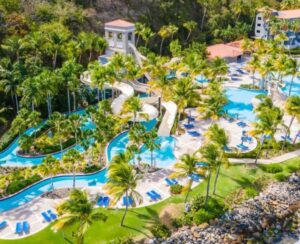Less than one year has passed since this newspaper published a months-long investigation titled, “Condo meltdown,” (CB July 26, 2012), which broke the news of a devastating rash of condominium foreclosures, excess inventory of properties and prices dropping at record rates. The news in the residential property realm continues to be less than encouraging, while commercial real estate has taken a beating as well. The good news is that the dark clouds over the real-estate industry may be parting for a little sunshine over the commercial segment.
Make no mistake, the inclement financial conditions hammering the commercial real estate segment reached devastating proportions in 2012: Commercial real estate property values sunk by 25% to 40% from the previous year, and property executions by banks rose by 46% compared with 2011, putting additional pressure on banks to unload many of these properties at cut-rate prices. That trend presented the risk of a fire sale on properties that could have sent the market into a freefall.
Thankfully, that hasn’t happened. Instead, the market has self-corrected and is enticing investors to buy the abundance of commercial real estate properties available at bargain prices. A recent study by Estudios Técnicos reports that vacancies in the office-building segment alone range at 8% to 10%—as much as 2.2 million vacant square feet in Class-A and -B buildings. Other real estate experts have higher estimates, noting that vacancies in Class-A and -B buildings are about 20%. That is a vast supply of prime commercial real estate.
The mother lode of distressed properties has allowed international real estate firms doing business in Puerto Rico to pitch prime location to investors from outside the island who are taking advantage of the many incentives available to them. Foremost is Law 22, which offers new residents exemption from capital gains and property taxes.
The Alejandro García Padilla administration is banking on Law 22 and the EB-5 (Employment-Based, Fifth-Preference Category) Immigrant Investor Pilot Program, which grants U.S. residency to foreigners who invest and create jobs in the U.S., as powerful lures to draw investors to Puerto Rico.
CARIBBEAN BUSINESS learned that there are several investors from the mainland U.S.—attracted to Puerto Rico by those incentives—who are confident that local commercial properties have stabilized.
The excess of inventory also presents a golden opportunity for new or existing local businesses to own prime real estate that they wouldn’t have been able to afford in 2012. For instance, a Class-A property that once had a price tag of $800,000 before undergoing a bank execution, is now available for about $500,000. That silver lining on the dark clouds that once hovered over the commercial property segment is a welcome sign.
If the real estate crash in Puerto Rico taught us anything, it was that we didn’t have an abundance of millionaires in Puerto Rico.
As the market continues to self-correct, it would be wise to remember that there is a market beyond Puerto Rico’s shores. To be certain, outside capital will help commercial real estate continue on a path to stability. Important players in the industry, among them several multinational real estate firms, have been able to sell Puerto Rico’s wares to investors from around the world.
Reduced costs and greater efficiencies are positive developments for businesses looking to grow, create jobs and get this economy moving forward again. However, the construction industry for new commercial and residential properties keeps getting worse. Property-execution rates rose by 46% in 2012 and bankruptcies in the construction industry have gone up 31% from the previous year.
Caribbean Business






